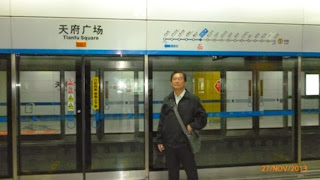Monday, May 20, 2013 by: Jonathan Benson, staff writer
(NaturalNews) The most popular fresh fruit in the world, mangoes are a whole lot more than just a delicious, refreshing treat produced by nature. As evidenced by copious scientific research, mangoes are also a powerful medicinal food, as they contain nutrients that can help clear up skin, promote eye health, stave off diabetes, and even prevent the formation and spread of cancer.
Research recently presented at a meeting of the Federation of American Societies for Experimental Biology (FASEB), for instance, revealed that eating mangoes every day can help moderate and even lower blood sugar levels, despite their natural sugar content. This is good news for people with type 2 diabetes who may benefit from consuming mangoes regularly as part of a low-sugar diet.
For their study, researchers tested the effects of mangoes on a group of obese animals, some of whom were given 10 grams of freeze-dried mango every day for 12 weeks. At the end of three months, the blood sugar levels of those animals that consumed mango were compared to those that did not consume mango. Based on the data, mango consumption was found to result in a significant decline in blood sugar levels.
"Although the mechanism by which mango exerts its effects warrants further investigation, we do know that mangoes contain a complex mixture of polyphenolic compounds," says Dr. Edralin Lucas, Ph.D., author of the study.
Similar research out of Australia found back in 2006 that eating mango can also help decrease inflammation and resulting high cholesterol, as well as block the formation of various health conditions included under the banner of metabolic syndrome. In essence, mangoes actually work better than cholesterol drugs at naturally balancing and optimizing cellular function throughout the body.
"We don't know yet how the whole thing's going to play out but we know some of the individual components (of mango) activate these receptors and even inhibit them," said a doctor from University of Queensland about the effects of mango consumption on cellular processes. "That could end up with positive nutritional health benefits for diabetes and high cholesterol."
And again in 2011, researchers from Oklahoma State University found that mango consumption helps lower insulin resistance and improve glucose tolerance in test mice. The same study also found that mangoes help normalize lipid levels throughout the blood, which in turn can help prevent the development of cardiovascular disease. 
Eating mangoes can also help you avoid cancer
But the health benefits of mango do not stop here. Science has identified more than 4,000 different antioxidant polyphenols in the plant kingdom, and many of these polyphenols are present in mangoes. The primary benefit of these polyphenols is that they scavenge damaging free radicals and protect cells against damage, which is believed to facilitate and even promote cancer.
"If you look at [mango] from the physiological and nutritional standpoint, taking everything together, it would be a high-ranking superfood," says Dr. Susanne Talcott, who together with her husband discovered back in 2010 that mango compounds target both colon and breast cancer cells.
"What we found is that not all cell lines are sensitive to the same extent to an anticancer agent. But the breast and colon cancer lines underwent apoptosis, or programmed cell death. Additionally, we found that when we tested normal colon cells side by side with the colon cancer cells, that the mango polyphenolics did not harm the normal cells."
In other words, mango compounds effectively target and eliminate harmful cancer cells while leaving healthy cells alone, a phenomenon that is unique to nature and nowhere to be found in pharmaceutical-based medicine. Chemotherapy and radiation, for instance, which are the two most popular conventional treatments for cancer, damage healthy cells along with malignant cells, which is why the treatments are a failure as far as long-term survival is concerned.
Sources for this article include:
(Courtesy of forwarded mail from Pan Mok Weng)





















































































































































































